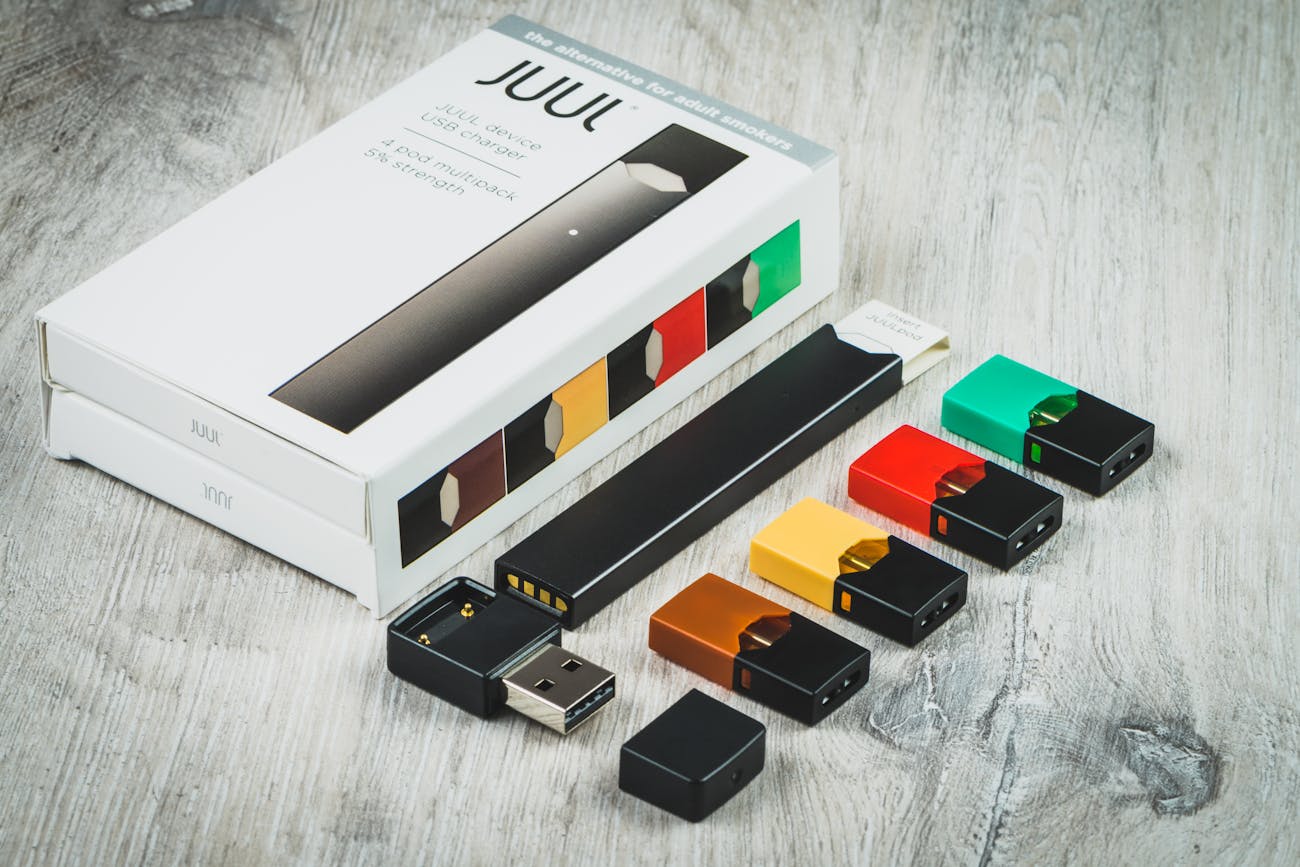“JUUL’s high nicotine concentration, discreet shape, and flavors could be particularly appealing to, and problematic for, youths.”
Science says vaping is cool. Okay, maybe science doesn’t directly say that, but evidence shows that more and more teens are using e-cigarettes, and teens are cool, so vaping must be cool, right? Unfortunately, public health officials at the US Centers for Disease Control and Prevention disagree. And they’re placing much of the blame for the rise in teen vaping on one company: the Silicon Valley e-cigarette startup JUUL Laboratories.
In a research letter published Tuesday in the Journal of the American Medical Association, researchers at the CDC and nonprofit RTI International’s Centers for Health Policy Science and Tobacco Research analyzed data from retailers across the country and outlined how JUUL’s meteoric rise in popularity may be accredited — at least in part — to its appeal among teenagers. While all e-cigarette brands increased in popularity between 2013 and 2017 because of marketing suggesting that they help people quit smoking, JUUL has become the most in-demand manufacturer of all.
“JUUL’s high nicotine concentration, discreet shape, and flavors could be particularly appealing to, and problematic for, youths,” wrote the study’s authors, led by Brian King, Ph.D., M.P.H., deputy director for research translation in the CDC’s Office on Smoking and Health.
Many teens may initially try e-cigarettes, like those manufactured by JUUL, because they’re seen as safer alternatives to traditional tobacco cigarettes. And JUUL’s sleek, compact design makes the device look like a USB drive, meaning it can easily be slipped into a pocket or concealed in the palm of the hand. Several reports suggest teens easily sneak it into classrooms. Its modular “pod” design also makes it easy for users to refill the nicotine-containing liquid by simply switching out a coin-sized cartridge. Compared to disposable devices with integrated batteries, JUUL’s rechargeable device offers several attractive qualities to many consumers, and the numbers bear this out.
According to the study’s authors, JUUL Laboratories sales increased by a whopping 641 percent from 2016 to 2017. This growth translated to a 515 percent increase in JUUL Laboratories’ share of the e-cigarette market, jumping from just 2 percent of the vape market when the company started to 13 percent in early 2017. The company’s hold on the vape market exploded after that, and as of December 2017, the company controlled 29 percent of e-cigarette sales. This means that almost one out of every three e-cigarettes purchased in the US is a JUUL.
Notably, the study only used purchasing data from retailers, so it was not possible for researchers to determine how old buyers were. The study’s authors did note, though, that previous research has suggested many of these purchases may have been made by consumers under the legal smoking age.
“These sales could reflect products purchased by adults to attempt smoking cessation or products obtained directly or indirectly by youths; a recent analysis found retail stores were the primary location where youths reported obtaining the JUUL device and refill pods,” they wrote.

In response to Inverse’s request for comment on the new paper, JUUL spokesperson Victoria Davis did not address the assertion that JUUL products are popular among young people. Davis did emphasize targeting “adult smokers” three times, though:
JUUL Labs is focused on its mission to improve the lives of the world’s one billion adult smokers. Like many Silicon Valley technology startups, our growth is the result of a superior product disrupting an archaic industry — in this case, one whose products are the number one cause of preventable death. When adult smokers find a satisfying alternative to cigarettes, they tell other adult smokers. JUUL Labs has helped more than 1 million Americans switch from cigarettes, and we’re excited about our continued expansion into markets outside of the United States such as the United Kingdom, Canada, and Israel.
This public relations tactic is becoming familiar territory for JUUL, whose official Instagram page is dominated by images of full-on adult adults, including testimonials from people like 68-year-old Kathy, a gray-haired woman named Barbara, and the rapper/actress Awkwafina, who, at 29 years old is young but no teen. The explicit focus on adults may be coming a little too late for the company, though, as it’s already in federal regulators’ crosshairs.
On September 13, Inverse reported that US Food and Drug Administration Commissioner Scott Gottlieb, M.D., announced that vaping had become an “epidemic.” Gottlieb noted that the FDA had issued 56 warning letters to retailers who illegally sold the devices to kids under 18 years old, and JUUL was specifically mentioned in his announcement. This week, the FDA also announced it had raided JUUL’s headquarters on Friday, seizing thousands of pages of documents. The operation was part of an investigation into whether JUUL has been marketing its products to children.
Dear webmaster,
I hope you are well?
First of all, I would like to point out that there is no need to delete anything. All I ask for is a small update.
We noticed you used one of our images from our Flickr page:
Our image is used in following article/post:
https://zedie.wordpress.com/2018/12/09/cdc-researchers-blame-juul-for-rise-in-teen-vaping/
We notice you do not use any attributions for using our image. Could you please attribute the image in accordance to the instructions outlined on our Flickr page?
From our Flickr page on attribution: “If you use this image please credit to
https://vaping360.com/best-vape-starter-kits/pod-mini-vapes/
using a do-follow hyperlink”. If you cannot hyperlink in the picture credit, please leave a do-follow hyperlinked credit at the bottom of the article/post instead.
If you do have any questions, please do not hesitate to get in contact with me.
Thank you for using our picture and feel free to use any of our other vaping images in the future using the correct attribution.
Thank you very much.
An answer or reaction would be great